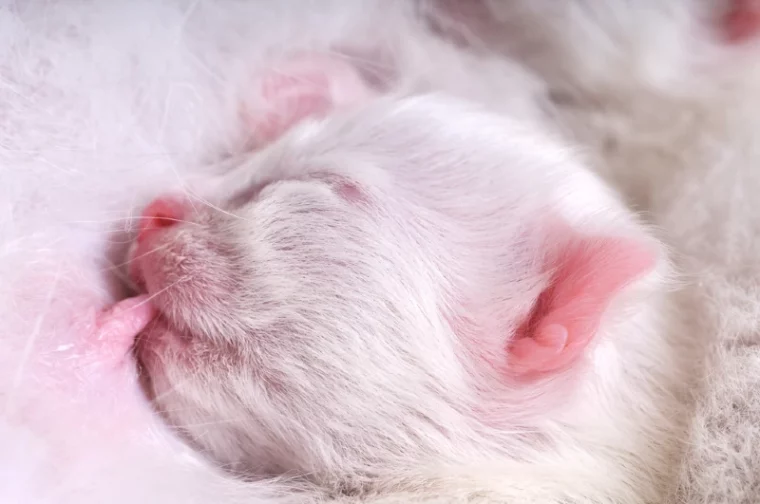
Like all mammals, kittens begin their lives consuming their mother’s milk. But at some point, they’ll need to be gradually weaned off mama’s milk, so they can start eating solid food. Normally, mama cat will deal with the majority of the weaning, but there are instances where she isn’t able to, which means you’ll need to step in. But when is it time to do this? And how should you go about weaning kittens off their mother?
Weaning kittens off their mother isn’t usually too difficult; it just involves a few steps and a bit of time. Here’s a closer look at what the process involves and a step-by-step guide on how exactly to wean kittens. Keep reading!
Before You Start: Know When to Wean a Kitten
In most situations, kittens should be ready to begin the weaning process at around four weeks old 1. A good way to tell if a kitten can begin being weaned is to notice how mobile they’ve become (by exploring their area to play) and whether they’re able to stand while also holding their tail up. Looking at your kitten’s teeth can also show whether they are ready to be weaned—as they should have incisors and canines by the time, so they’re ready. Kittens might also start trying to eat mama’s food, which is another sign.
However, if you have a kitten but no nursing cat, you’ll need to take the place of mama and feed the kitten with milk replacement formula until they are four weeks old and ready to wean. Once it’s reached four weeks, as long as it has become more active and can stand with its tail up, it should be ready to be weaned off the milk replacement formula slowly like a kitten nursed from the mama cat. Usually the weaning process takes about 3 weeks with most kittens completely weaned by 6-8 weeks of age.
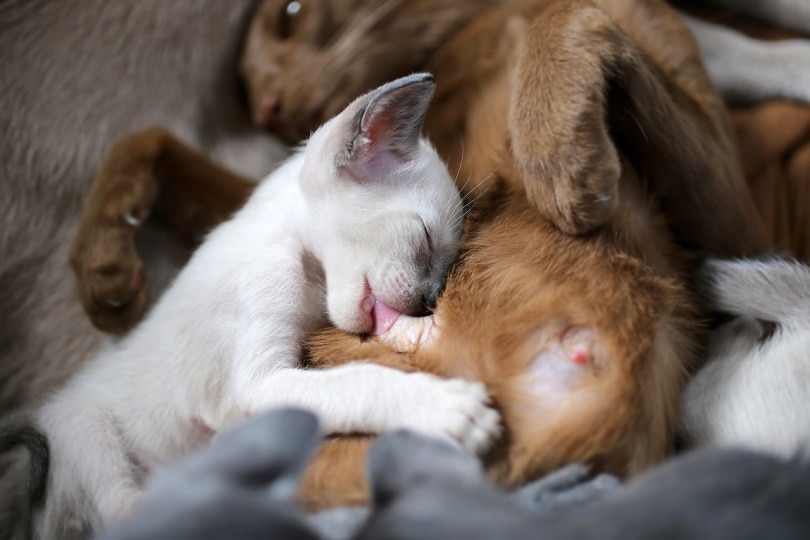
Step-By-Step Guide: How to Wean a Kitten
There are actually only three steps to weaning a kitten, but these steps will take a few weeks. This is because you’ll be weaning the kitten off milk slowly, rather than quickly, to avoid stomach upset. Here’s what you need to do.
1. Introduce kitten food slowly
The first step in weaning a kitten off their mother or milk replacement formula starts when the kitten is around 4 weeks old. This is when you’ll slowly introduce the kitten to its new food. Soften wet kitten food by mixing it with mixing water or kitten milk replacement with kitten food to start off with. Since you’re going slowly and carefully, you might want to smear some of this mix on your finger so the kitten can lick it off.
2. Increase Gradually
Once the kitten seems comfortable with this new way of eating, you can attempt putting the softened kitten food in a flat dish to see if they’ll eat it that way. Just keep a close eye on the kitty during this time to ensure they don’t inhale their food and choke or eat so fast they get sick. Little and often is best as they have small stomachs, follow the feeding guidelines on the kitten food.
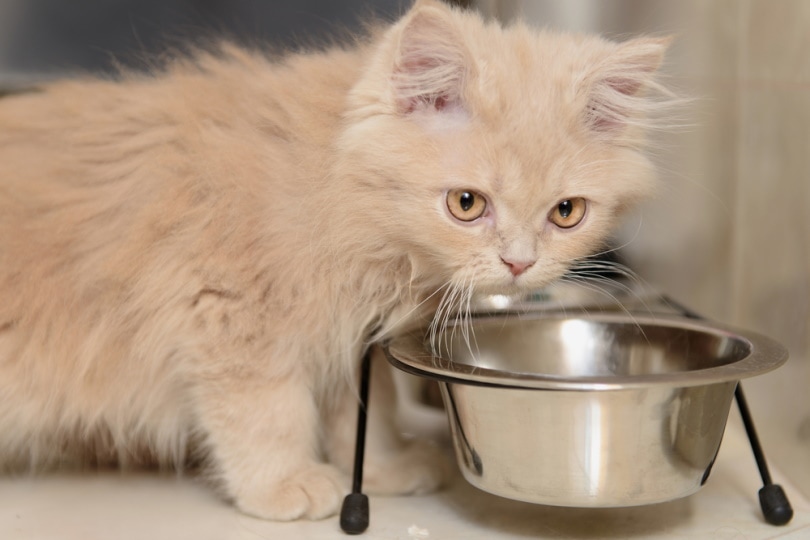
3. Move to dry food
Getting a kitten used to the formula/water and food mixture and having it start eating from a bowl will hopefully only take a week or two. So, by the time a kitten has reached 5–6 weeks, you should be able to start transitioning them (again, slowly) to dry food, if you want to feed them dry food. To make it easier for the kitty to digest dry food, you can soften it with water at first. Then gradually reduce the amount of water the dry food is mixed with as the kitten becomes more comfortable eating it. Make sure they always have a shallow dish of fresh water available to drink.
4. Monitor
And the final step of weaning is monitoring. By 6–7 weeks, a kitten should be comfortably consuming dry food, meaning the weaning process is finished. But that doesn’t mean you shouldn’t keep an eye on them! Watch for any issues that may arise, and ensure the kitten is actually eating; sometimes kittens think this new food is a toy at first, so it could take them a little time to understand that it’s for eating. Regularly weighing kittens to make sure they are gaining weight is a good idea. Also, it is important at this step to be patient!
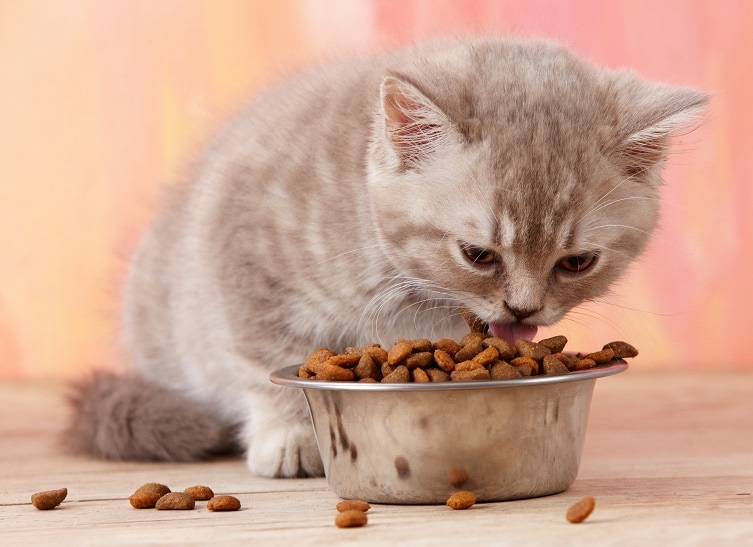
Frequent Asked Questions About Weaning Kittens
Now you know how to wean a kitten off its mother (and when)! But you might still have some questions about weaning kittens. Here are a couple of the most commonly asked questions about this topic.
What if a kitten is weaned earlier than it should be?
There’s a reason kittens should be weaned at a certain time, and that reason is that weaning kittens earlier than they should results in them being more likely to develop anxiety and aggression. Weaning kittens too early can have an adverse effect on their behavior down the road, and that isn’t something you want!
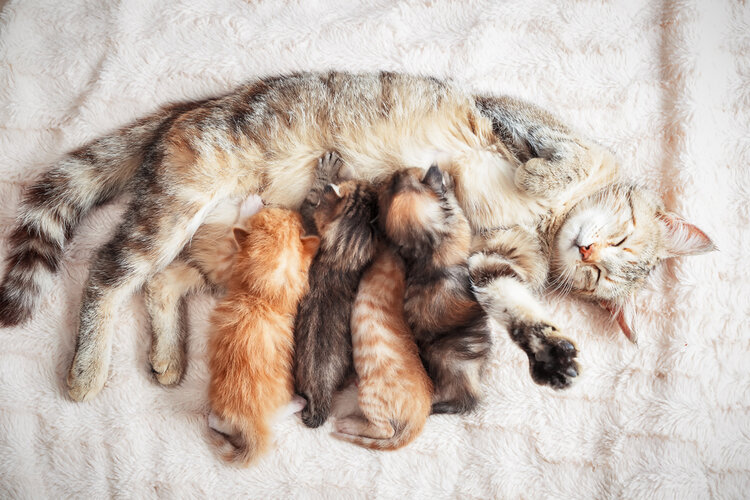
Do I really need to use kitten-specific food?
Yep! Kittens have different nutritional requirements to adult cats as they are rapidly growing and developing. Kitten-specific formulas are designed to have more calories and higher levels of certain nutrients which are vital to the healthy growth of a kitten.
Final Thoughts
Weaning a kitten off its mother should be started around the age of four weeks. The process will take a bit of time, but by the time a kitten has reached about eight weeks of age, it should be successfully weaned and enjoying dry food. A slow, steady weaning process will lead to healthier kittens. Just remember to give kittens a high quality food specifically designed for them, as these formulas have all the nutrients and calories they need!
Related Reads:
- When Can You Hold Kittens? Facts & FAQ
- When Does a Kitten Start Eating Food & Drinking Water? Vet-Approved Facts & FAQ
Featured Image Credit: Levent Konuk, Shutterstock







